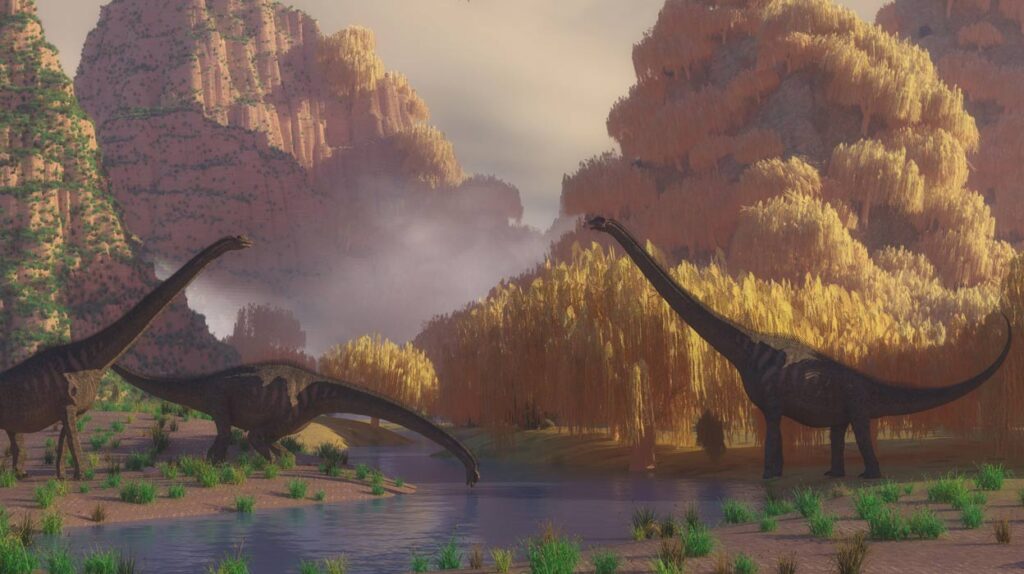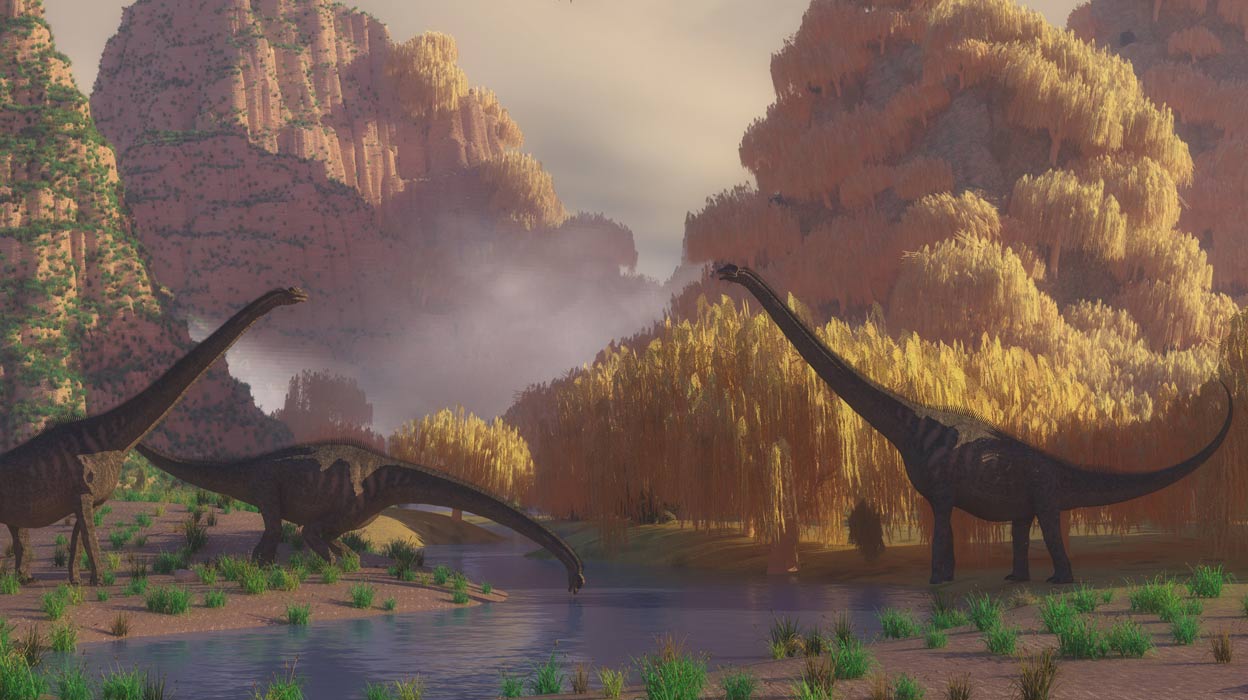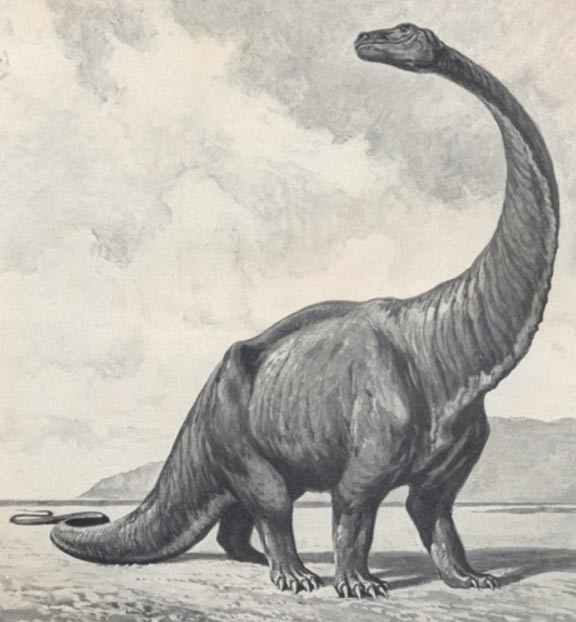

Mokèlé-mbèmbé is the name given to a creature believed to inhabit the upper reaches of the Congo River basin, i.e. Congo, Zambia, and Cameroon, as well as in Lake Tele (in the Republic of Congo) and its surrounding regions.
This name originates from the Lingala language, and is commonly translated to mean ‘one who stops the flow of rivers’, said to be a reference to the creature’s supposed preference for nestling in the bends of rivers. Mokèlé-mbèmbé is also said to be the word for ‘rainbow’, as well as ‘mystery’, according to Paul Ohlin, a missionary who has spent more than a decade living with the Bayaka pygmies of Congo and the Central African Republic.

An artist’s illustration of a Mokèlé-mbèmbé. (cryptidz.wikia.com)
Description of the Creature
Over the years, numerous physical descriptions of the Mokèlé-mbèmbé have been provided. The various accounts generally agree that the creature is enormous in size and has a long neck with a small head, as well as a long tail. In some accounts, the Mokèlé-mbèmbé is also said to be an herbivorous creature that lived in caves by the river, where it could find its favorite food – a certain type of liana.
Despite its vegetarian diet, it is thought that the Mokèlé-mbèmbé would act aggressively if approached by people. In one account, it is said that the beast has a single horn, perhaps like a rhinoceros, with which it would kill elephants. There are also claims that the Mokèlé-mbèmbé is a spiritual, rather than a physical being.

Illustration of a Mokèlé-mbèmbé (Public Domain)
Mokèlé-mbèmbé Sightings
The first report of the Mokèlé-mbèmbé by Westerners dates back to 1776, and is attributed to a French missionary in the Congo River region by the name of Liévin-Bonaventure Proyart. The missionary reported that he had seen enormous footprints (a meter (3.28 ft) in diameter with claw prints) of some animal in that region. The creature that left these footprints, however, was not sighted. No further reports about the Mokèlé-mbèmbé were made until the early part of the 20th century.
In 1909, an explorer by the name of Lt. Paul Gratz wrote about a creature similar to the Mokèlé-mbèmbé, known as the ‘Nsanga’. This creature is found in the legends of the natives living in present day Zambia, and is rumored to inhabit the Lake Bangweulu region. Gratz’s report is important, as it is the first account that describes the animal as dinosaur-like. Since then, it has been commonly accepted that the Mokèlé-mbèmbé is some kind of dinosaur.
Around the same time, Carl Hagenbeck, a renowned German big game hunter, claimed that he had heard about the beast as well. In his autobiography, Beasts and Men , Hagenbeck wrote that he was told about “a huge monster, half elephant, half dragon” that was living “in the depth of the great swamps” in the interior of Rhodesia (an unrecognized state that once occupied the territory which is today Zimbabwe). Hagenbeck also wrote that:
“I am almost convinced that some such reptile must be still in existence. At great expense, therefore, I sent out an expedition to find the monster, but unfortunately they were compelled to return home without having proved anything, either one way or the other.”

An artist’s concept of the Mokele-mbembe. (CC BY SA 4.0)
Disputed Existence of Mokèlé-mbèmbé
Hagenbeck may have been the first Westerner to have led an expedition to find the Mokèlé-mbèmbé, but he would certainly not be the last. As of 2011, over 50 expeditions have been carried out to find the creature.
Apart from alleged footprints, fuzzy photographic images, and a deluge of eyewitness reports (including one in which a missionary claims to have been acquainted with some pygmies who killed a Mokèlé-mbèmbé during the 1960s), there is a lack of indisputable evidence to prove the existence of the Mokèlé-mbèmbé.
In addition to the absence of hard evidence, the existence of the Mokèlé-mbèmbé is doubted based on several factors. For example, it has been argued that, if the Mokèlé-mbèmbé is a prehistoric dinosaur, as many claim, then it is highly unlikely for it to be just one animal, or a few individuals.
If the Mokèlé-mbèmbé had survived unchanged in the Congo River basin for the last 65 million years, then there must be a sizeable population of them. Enough physical evidence (such as skeletal remains or feces) would have been left behind by the creatures, and should have been found by now.

Illustration of Brontosaurus in the water, and Diplodocus on land. (Public Domain)
Another argument against the existence of Mokèlé-mbèmbé draws from the experience of zoologists who search for species believed to have gone extinct in recent history. If one intends to re-discover a presumably extinct animal, one would need to conduct multiple searches. It has been found that if such a creature still exists, it would usually turn up after three to six searches were conducted, after which the probability of its existence decreases. Given that over 50 expeditions have been conducted, the likelihood that the Mokèlé-mbèmbé exists seems to be pretty slim.
Nevertheless, there are those who have not given up, and who fervently believe that the Mokèlé-mbèmbé will one day be found. The most prominent of these are the Creationists, who hold the view that the Mokèlé-mbèmbé, if found, would provide hard evidence for their literal interpretation of the biblical account of creation.

Depiction of humans attacking a Mokèlé-mbèmbé. (cryptomundo)
They also believe that the existence of such a creature would serve to discredit the claims of evolutionists, as the Mokèlé-mbèmbé would be ‘proof’ that dinosaurs reproduced “after their kind, not ‘evolving’ from (or into) other life-forms”. Considering what is at stake, it is likely that the hunt for the elusive Mokèlé-mbèmbé will continue for some time to come.




